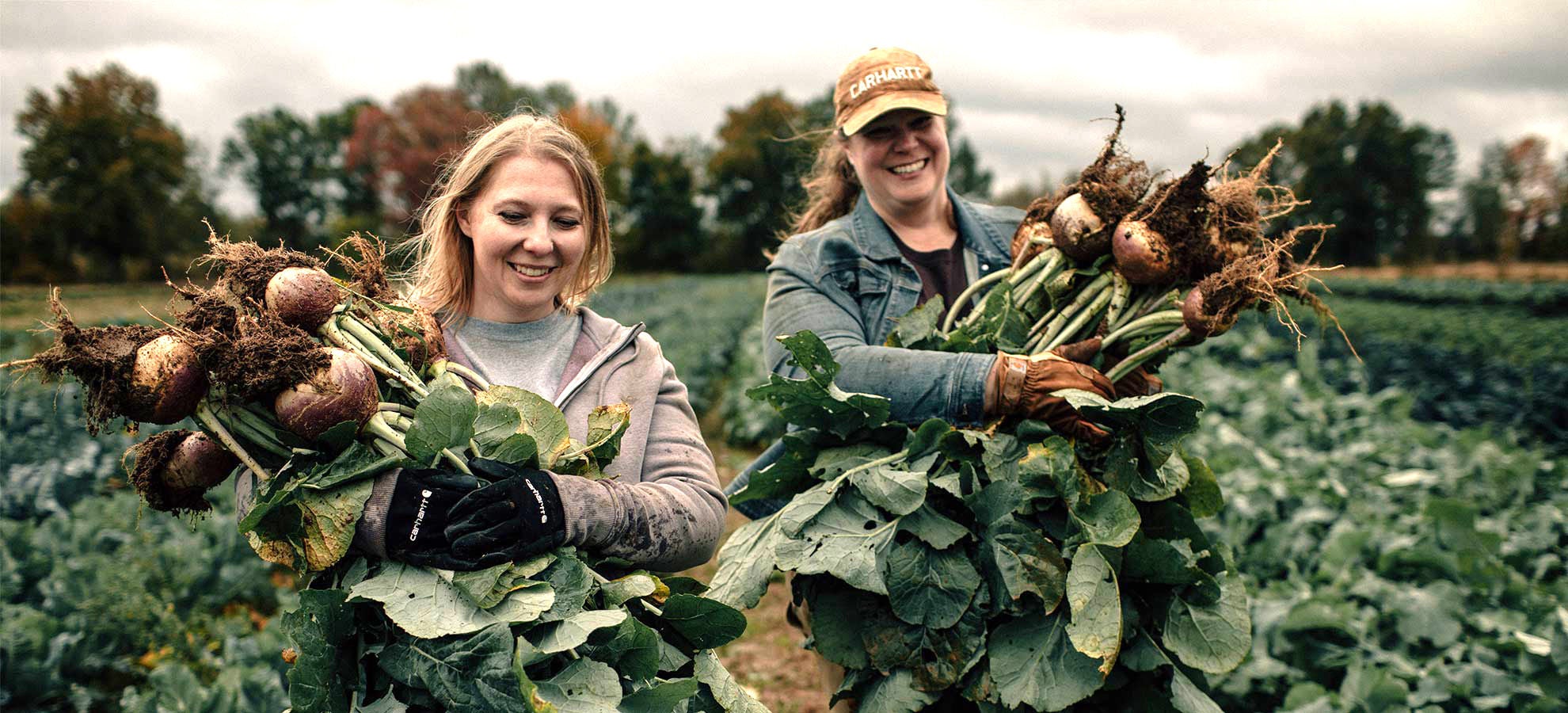
The human side of large-scale transformation

At a glance
An iconic clothing brand wanted a strategic approach and the right training tools to prepare for a large-scale transformation.
Impact
We worked with Carhartt’s teams and technology partner to co-create organizational effectiveness and change management solutions that will empower employees, drive user adoption, and ensure a great experience for customers.
Key Services
Industry
Retail
Outworking them all, from steam to digital
Carhartt is the original workwear company. It’s justly famous for its purpose-built, authentic products, including the classic Brown Duck Chore Coat and popular A18 Watch Cap. For more than 132 years—all the way from the steam age to the digital era—the family-owned business has overcome challenges presented by technological revolutions, world wars, economic turmoil, and two pandemics. It’s a global brand for honest, hardworking, industrious people, built by honest, hardworking, industrious people.
In 2019, facing both rapid growth and marketplace disruption, the company embarked on Project Catalyst, an ambitious multiyear initiative encompassing both technology and business transformation. Its scope includes migrating to SAP S/4 HANA, moving to the cloud, and reimagining business processes end-to-end. Led by a cross-functional team, the project will enable Carhartt to improve visibility across the organization, make big changes to how it manages inventory, keep on delighting its customers, and thrive well into the twenty-first century.
People first, always
Like many transformations, and in line with Carhartt’s values, Project Catalyst is as much about people as it is about technology. The second phase of Project Catalyst is its most complex, directly affecting 350+ associates (employees) in the wholesale business and indirectly impacting the majority of Carhartt’s 5,000+ workforce.
The Project Catalyst team had documented hundreds of pain points affecting Carhartt’s associates, customers, and consumers. Information that led executive Jenny Hall to identify an opportunity—and a challenge—to drive a more effective SAP implementation by enlisting associates as change agents. Hall says, “The sheer number of people that had to be trained and the matrix of a training plan that was going to have to be created was overwhelming. I thought, how do we even start?”
That’s where Slalom Detroit came in.
Mapping processes, identifying barriers
Slalom and Carhartt teams partnered to map processes and stakeholders across areas that included distribution, order management, manufacturing, finance, and others vital to the well-being of the business. Together, we identified, documented, and analyzed 250 changes across 60 processes arising from the SAP migration.
We then worked with Carhartt’s business teams to review the impact of the changes, translate them into benefits and challenges, identify barriers and solutions, and share key learnings and updates with leaders.
“We didn’t just create a laundry list,” says Jennifer Pierce, a Slalom consultant and the PM on Project Catalyst. “We came in and helped facilitate discussions with the business leads to say, ‘Okay, this is a business process change we’ve identified. Do you think we need to find a process owner for this area? Do we need to document a process flow for this change? Do we need a RACI? What’s our plan to socialize this once we have that documented, and what groups do we need talk to?’”
Getting process flows organized is a meticulous undertaking. But an important one, says Slalom principal Saurabh Bhargava, because it enables leaders to “communicate with people clearly and say, ‘this is what’s changing in your area,’ or ‘this is how it is today and this is how it’s going to be tomorrow.’”
We created a one-page overview that Hall and her team could use to align with other groups and present a clear overview to other executives. She says, “We were able to meet with the vice president and one of his team members who leads our internal manufacturing. We took them through ‘Here’s the change. Here’s who’s impacted,’ all the way across eight different categories.”
Finally, our consultants wanted to make sure Carhartt was equipped to capture future changes itself. We showed its leaders how to develop their own process maps and RACIs, shared best practices for socializing those documents, and introduced them to new tools for brainstorming and virtual facilitation.
A comprehensive training roadmap
The teams then moved on to identifying training needs for end users and creating an 11-month roadmap. The roadmap outlined the training scope, the process flow and sequence, the channels for delivery, the training roles that needed to be filled, and whether HR needed to be engaged. It accounted for complex dependencies like different countries and languages, additional technologies in use, and team outcomes. We also set KPIs around training readiness, virtual learning completion, user feedback, and long-term metrics to help Carhartt track its progress.
With the roadmap in place, we then delivered curricula outlines and risk analyses for 71 courses on topics ranging from sales order management to “Intro to Project Catalyst” and “SNP 101.”
“Slalom helped us get started. I mean from the ground up,” says Hall. “We have a lot of variables here. There’s a magnitude to the amount of people and the locations and the languages. Slalom’s training expertise has hit every single one of those things.”
Leading with empathy in uncertain times
COVID lockdowns started mid-engagement, and our consultants needed to bring the best change management practices to their own work. Bhargava recalls that there was no break—we simply pivoted to virtual collaboration overnight. Out of that moment came the spark of an idea for something outside of the engagement scope. “Throughout the course of our engagement, we realized that Project Catalyst was already very intense for Carhartt,” he says. “And then COVID happened. The whole idea of doing Leading with Empathy training stemmed from that.”
The workshop guided leaders through the theory around effective change in organizations, introduced empathy-focused exercises, and helped them identify opportunities for their own growth. It was so well-received that our consultants were asked to roll it out to the CIO and his entire department.
“It was applicable to the empathy that we need to keep in mind as we are asking the organization to go through a lot of change,” says Hall. “It was relevant. It was digestible. It was actionable.”
Ready for success
Hall believes the Project Catalyst team is significantly ahead of where they need to be thanks to the OE work. They have a clear path forward that empowers them to anticipate and gauge the impact of future decisions around process changes and ownership. They have a wealth of tracking tools, change plans, checklists, training plans, and stakeholder maps; in short, everything they need to bring their people along. And for Carhartt’s hardworking customers, Project Catalyst’s success ultimately means a smoother experience and getting more of those much-loved products to the right place, at the right time, and in the right quantities.
Hall doesn’t hesitate to offer words of wisdom to other companies undertaking transformation initiatives. “Bring in an expert to help you understand how to do training right,” she says, “because it’s not easy and it’s going to be far more complex than you ever imagined.”






